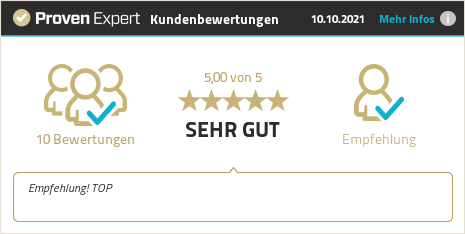A pollen allergy always strikes when it is most beautiful outside
Spring and early summer are difficult months for pollen allergy sufferers – because with the beginning of the warm season there is no escape from pollen of all kinds. In our guide you will find out what triggers a pollen allergy, how you can successfully combat symptoms of a pollen allergy and why one air cleaner is probably the best device for people with an allergy to pollen.
What is pollen
The term pollen comes from Latin and means “flour dust” or “very fine flour”. Indeed, pollen, another word for pollen, is a flour-like substance that is formed in the so-called stamens of seed plants. Pollen is used by the plant to bring the male germ cells well protected to the female receiving organs. In this way, pollen enables the plants to be fertilized.
What is a pollen allergy?
As soon as trees and bushes start to bloom, pollen is scattered over a large area by the wind or by insects. The pollen that is flying around is microscopic – and that is why we humans ingest it through the nose or mouth. In some people, the immune system reacts to the pollen like a germ. As a defense reaction, the messenger substance histamine is released – which is responsible for the known symptoms of a pollen allergy such as itching, sneezing, runny nose or red eyes. A pollen allergy is therefore not a disease in the strict sense, but rather an overreaction of the immune system to an actually completely harmless substance.

What are the symptoms of a pollen allergy?
A pollen allergy can manifest itself in a wide variety of forms. Since pollen is mainly absorbed through the respiratory organs, this is where the most violent defense reactions occur. However, a pollen allergy can also affect the entire body!
Typical symptoms of a pollen allergy include:
- Stuffy nose / hay fever
- Persistent urge to sneeze
- Itchy nose and eyes
- Runny nose
- Inflamed nasal mucosa
- cough
- headache
- Shortness of breath
Other reactions of the body in the context of pollen allergy are:
- Rashes
- Swelling
- Difficulty concentrating
- sleep disorders
- Eczema
- Circulatory problems
Can you treat a pollen allergy with medication?
As with all allergies, a pollen allergy can be treated effectively. A specialist doctor must always determine whether there is a pollen allergy. The doctor may prescribe cortisone, antihistamines, or cromone for a confirmed pollen allergy. Each drug has its own advantages and disadvantages that only a doctor can reliably clarify. Important to know: A complete cure of a pollen allergy is not possible with the available drugs, but these alleviate the symptoms or suppress them completely. Thus, the drugs against pollen allergy contribute to a significantly improved well-being.
Which plants are particularly dangerous if you are allergic to pollen?
All plants that reproduce via seeds form pollen – therefore, in principle, all seed plants are endowed with allergenic potential. However, some species stand out among the plants:
- Ambrosia: Introduced from North America, it flowers from late June to late October. Ambrosia is one of the plants with the highest allergenic potency!
- Mugwort: The popular culinary herb blooms from mid-May to the end of October. Unfortunately, mugwort has a very high allergenic potency.
- Birch: Birch trees are widespread in Central Europe. Due to the high proportion of pollen, birches under the trees have the highest allergy potential.
- Grasses: We have all kinds of grasses, the phase that can trigger a pollen allergy is correspondingly long. Grasses spread their pollen from April to the end of November.
How do you alleviate a pollen allergy or its symptoms?
With some behaviors, symptoms caused by a pollen allergy can be significantly alleviated. In general, the windows in the bedroom or the windows of the car should be kept closed during the “main flight times” of the pollen. The best time to ventilate is between 6 p.m. and midnight – or right after heavy showers. If your own garden is available, all grasses should be kept as short as possible. Any plants that could potentially trigger a pollen allergy should be removed before the flowering period. To ensure that the pollen does not find its way into the apartment, meticulous hygiene is the order of the day! Clothes and hair are particularly often contaminated by pollen. Take off your street clothes as soon as you enter your four walls. You should keep your hair short on the one hand and rinse it regularly on the other. This is how you remove clinging pollen before it can trigger a pollen allergy. As a technical aid, you should definitely have one air cleaner consider – more on this in the next paragraph!
Air purifier for pollen allergy
A air cleaner is a technical device that can filter all the air in a room in a short time. For this purpose, the air purifier has a slow-running fan that draws the ambient air into the interior of the housing. There the air is flowed through one or more filters and cleaned of all kinds of particles – including pollen. The clean air is pressed out on the other side of the device – pollen and dust are removed from the air.
Air purifiers that are to be used against pollen allergies must have powerful filters. The minimum standard for an air purifier against pollen allergy should be a HEPA filter. HEPA filters are particularly fine-meshed so that even the smallest particles stick in them. Air purifiers with activated carbon filters have an even better filter performance. Activated charcoal can be imagined as a highly porous sponge, the innumerable pores of which absorb small and tiny particles and hold them permanently.

